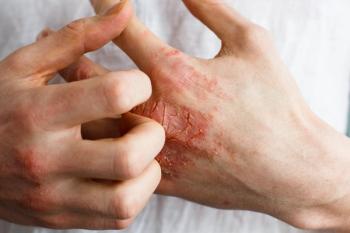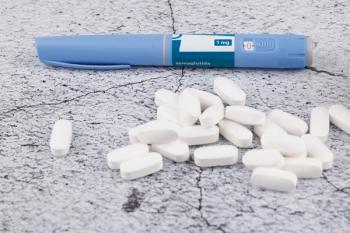
2023-2024 COVID-19 Vaccine Efficacy Wanes Over Time
New study data reveal the waning effectiveness of 2023-2024 COVID-19 vaccines, highlighting the need for ongoing vaccinations and pharmacist involvement.
The 2023-2024 COVID-19 vaccines were associated with fewer medically attended cases, but vaccine effectiveness wanes over time, supporting recommendations for a 2024-2025 vaccination. In the study, whose findings were published in JAMA Network Open, investigators aimed to determine the effectiveness of previous COVID-19 vaccines in preventing emergency department (ED) and urgent care (UC) visits.1
“VE [vaccine effectiveness] can be measured in multiple ways but is essentially a comparison between rates or risk of disease in vaccinated vs unvaccinated (or less vaccinated) populations,” the study authors wrote.1 “Persons who did not receive 2023-2024 COVID-19 vaccines were more susceptible to SARS-CoV-2 infection soon after [the] 2023-2024 COVID-19 vaccine rollout, which corresponds to the earlier time since dose strata, [than] those who received a 2023-2024 COVID-19 vaccine.”
Pharmacists played a vital role during the COVID-19 pandemic, carrying out more than 42 million COVID-19 tests and over 270 million vaccinations from February 2020 through September 2022. Vaccinations by pharmacists accounted for more than 50% of all COVID-19 vaccines in the United States, and pharmacy teams helped avert more than 1 million deaths and 8 million hospitalizations; this led to approximately $450 billion in health care savings.2
Beyond COVID-19, pharmacists are essential in promoting health and wellness in their local communities. They can engage in open dialogue about the effectiveness and importance of vaccines to help increase vaccine adoption and combat hesitancy. As pharmacists are highly accessible, they are often trusted sources for the communities they serve and can establish and maintain confidence in vaccines.3
Investigators of the current study aimed to estimate the 2023-2024 COVID-19 vaccine efficiency and determine the waning patterns and differences by age and immunocompromised status. To estimate vaccine effectiveness, data from 6 health care systems across 8 states were included, according to the study authors. They obtained vaccine history via electronic health records.1
There were 345,639 eligible ED and UC visits (with patients having a mean age of 53 years; 60% were female). Of the encounters, 10% of patients were Black or African American; 15% were Hispanic or Latino; 61% were non-Hispanic White; 10% were non-Hispanic other races, such as Native American, Alaskan Native, Asian, Native Hawaiian, or Other Pacific Islander; and 3% were of unknown race. The investigators noted that 3% of cases occurred in December 2023, and 69% occurred during the JN.1 strain predominance. Approximately 11% of encounters resulted in a positive COVID-19 test, with 16% of those individuals having received a COVID-19 vaccine, compared with 19% of control encounters who had a negative COVID-19 test result.1
The vaccine effectiveness against COVID-19–associated encounters was 24% in the 7 to 299 days post vaccination, which the study authors noted was similar across age ranges. During days 7 to 59 post vaccination, vaccine effectiveness was 49%, decreasing to –7% at 180 to 299 days post vaccination. For hospitalizations, 111,931 encounters were included, with patients having a median age of 71 years and 54% being female. December 2023 and January 2024 had the most encounters at 11% each, and 70% of encounters occurred during the JN.1 predominance period. Vaccine effectiveness was found to be 29% for preventing hospitalizations during 7 to 299 days post vaccination. For 7 to 59 days post vaccination, investigators found that vaccine effectiveness was 51%, decreasing to –4% at 180 to 299 days post vaccination.1
Notably, for hospitalizations 7 to 59 days post vaccination, vaccine effectiveness was 54% for patients 65 years and older compared with 31% for those aged 18 to 64 years. For patients who had documented immunocompromising conditions, investigators said they were more likely (21%) to be admitted to the intensive care unit than nonimmunocompromised patients (14%). Additionally, patients who were immunocompromised were more likely to receive the COVID-19 vaccine during the 2023-2024 season than those who were not immunocompromised, at 27% and 22%, respectively. Furthermore, patients who did not get COVID-19 and were immunocompromised were more likely to receive the vaccine than those who did get COVID-19, at 27% vs 23%.1
“The 2023-2024 COVID-19 vaccines were associated with additional protection against COVID-19–associated ED and UC encounters, hospitalization, and critical illness beyond existing protection provided by prior vaccination or SARS-CoV-2 infection,” the study authors said.1 “Vaccines were associated with protection for immunocompromised and nonimmunocompromised adults and during XBB- and JN.1-predominant periods, although protection was lower during JN.1, emphasizing the likely importance of receiving updated COVID-19 vaccination.”
READ MORE:
Ready to impress your pharmacy colleagues with the latest drug information, industry trends, and patient care tips? Sign up today for our
REFERENCES
1. Link-Gelles R, Rowley EAK, Irving SA, et al. Estimated 2023-2024 COVID-19 vaccine effectiveness in adults. JAMA Netw Open. 2025;8(6):e2517402. doi:10.1001/jamanetworkopen.2025.17402
2. Grabenstein JD. Essential services: quantifying the contributions of America's pharmacists in COVID-19 clinical interventions. J Am Pharm Assoc (2003). 2022;62(6):1929-1945.e1. doi:10.1016/j.japh.2022.08.010
3. Shen AK, Tan ASL. Trust, influence, and community: why pharmacists and pharmacies are central for addressing vaccine hesitancy. J Am Pharm Assoc (2003). 2022;62(1):305-308. doi:10.1016/j.japh.2021.10.001
Newsletter
Pharmacy practice is always changing. Stay ahead of the curve with the Drug Topics newsletter and get the latest drug information, industry trends, and patient care tips.





























































































































